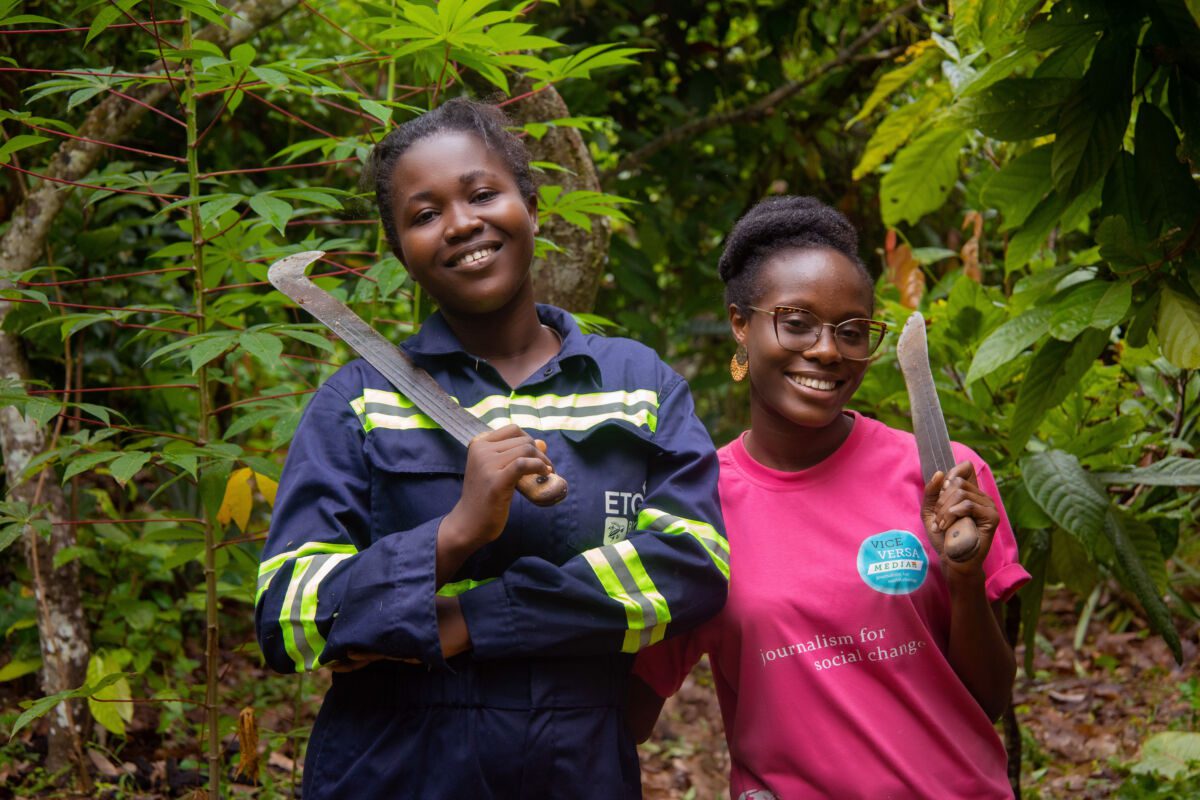
Sowing a New Path Beyond the City Lights
A 29-year-old female cocoa farmer earning millions? For many, this sounds impossible.
From an early age, children are taught to aspire for the same blueprint: excel in school, earn a degree, secure a white-collar job in an office, and climb the social ladder. To veer from this path often means carrying the stigma of failure. Agriculture, particularly rural farming, has long been viewed as unfashionable, and a backbreaking work, disconnected from notions of success and prestige.
Yet, Vida Agorvu defies this script. At just 29, she has carved her own path from the red earth of Dockrochiwa in the Eastern Region of Ghana, transforming farming into a lucrative venture. Vida is a striking rebuttal to the stereotypes that chains young people to narrow definitions of success.

Vida Agorvu
Vida’s Journey: From City Dreams to Cocoa Realities
Like many of her peers, Vida left her village with the dream of a better life in Accra the city of Ghana. The capital city promised opportunity, financial security, and social respectability. After high school, she followed this migration pattern and quickly found employment. But the glossy promise of city life soon dulled: her salary barely sustained her, and the pressure from her family back home intensified.
“My family looked up to me for financial aid since I was now in Accra. I could hardly fend for myself, not to talk of supporting the entire family, but people back home would not understand. To them, living in the city meant having abundance,” she reflects.
After two years of hustling in Accra, Vida stood at a crossroads. Should she cling to a precarious life in the city or return to the cocoa farming which she knew intimately but had rejected? The decision was not simple. Returning to the farm meant ridicule from peers who believed she had failed to adapt to urban life, and skepticism from neighbors who saw no logic in abandoning the city.
Yet in 2017, she made the leap. With courage and conviction, she returned to her village to start cocoa farming.
“It was a tough decision. I had to endure mockery from my colleagues who had fled the village and disbelief from those who stayed. They thought I was throwing away a better life. But today, I can boast of three acres of cocoa farmland and an income that is still a distant dream to many of them.”
Vida’s gamble paid off. Her farm, now supplies thousands of cocoa beans to local cooperatives. She generates enough income to support herself and her daughter without any independency.

Achievements, Innovation, and Community Impact
Vida’s success did not emerge in isolation. She aligned herself with the Eastern Women Cocoa Cooperative, a network that equips female farmers with training, resources, and solidarity. It was here that she encountered climate-smart farming practices and innovative strategies to increase yields.
“The cooperative has taught me new technological ways of farming and how to adapt to climate change,” she shares.
Among these is the practice of intercropping cocoa with plantains and cocoyam. Far from being traditional subsistence crops, these companions play a critical role: they provide shade for tender cocoa seedlings, conserve soil moisture, and enrich the soil’s fertility. This method demonstrates how blending indigenous knowledge with modern agronomy creates sustainable farming systems.
Vida’s role has expanded beyond her farm. Now the secretary of the cooperative, she mentors aspiring farmers, especially women who struggle against the same social pressures she once faced.

Redefining Gender Roles in Cocoa Farming
Despite her achievements, Vida’s journey is fraught with challenges that reveal the entrenched gender biases in agriculture.
“Being a female cocoa farmer is quite challenging. When it is time to spray our farms with pesticides, I am often told women shouldn’t handle the machines. And when I contract laborers to weed, some squander the money and leave the work undone because they assume I can’t hold them accountable as a woman. At the end I would have to weed my farm myself” she recounts.
These barriers extend beyond daily inconveniences. They highlight the structural disadvantages women face, from limited access to land ownership and capital to the constant need to prove their competence. Yet Vida has chosen to confront these challenges head-on, refusing to cede ground in a profession too often reserved for men.
Her defiance speaks directly to the youth. By demonstrating that cocoa farming can be lucrative and dignified, Vida undermines the myth that only city jobs hold prestige.
“Young people often look down on agriculture, but there’s so much money here if you’re committed. I am open to mentoring any young person who wants to venture into farming.”

Conclusion: The Bigger Picture
Cocoa is Ghana’s pride and lifeblood, contributing billions to the economy and supporting over 800,000 smallholder farmers. Yet paradoxically, many of the young people who could rejuvenate the sector abandon fertile lands for overcrowded cities, leaving behind an aging farming population.
Vida’s trajectory stands as a sharp counterpoint to this trend. Her decision to stay and invest in cocoa reaffirms the crop’s economic viability. More importantly, it suggests that with the right support, farming can empower young people to achieve financial stability without migration. Her journey also sheds light on broader development issues: rural-urban migration, youth unemployment, gender equity, and the urgent need for climate adaptation in farming practices.
Edited By Elizabeth Nana Adjoa Bonney
-
William Adjei
12.09.2025Very impactful

Leave a Reply